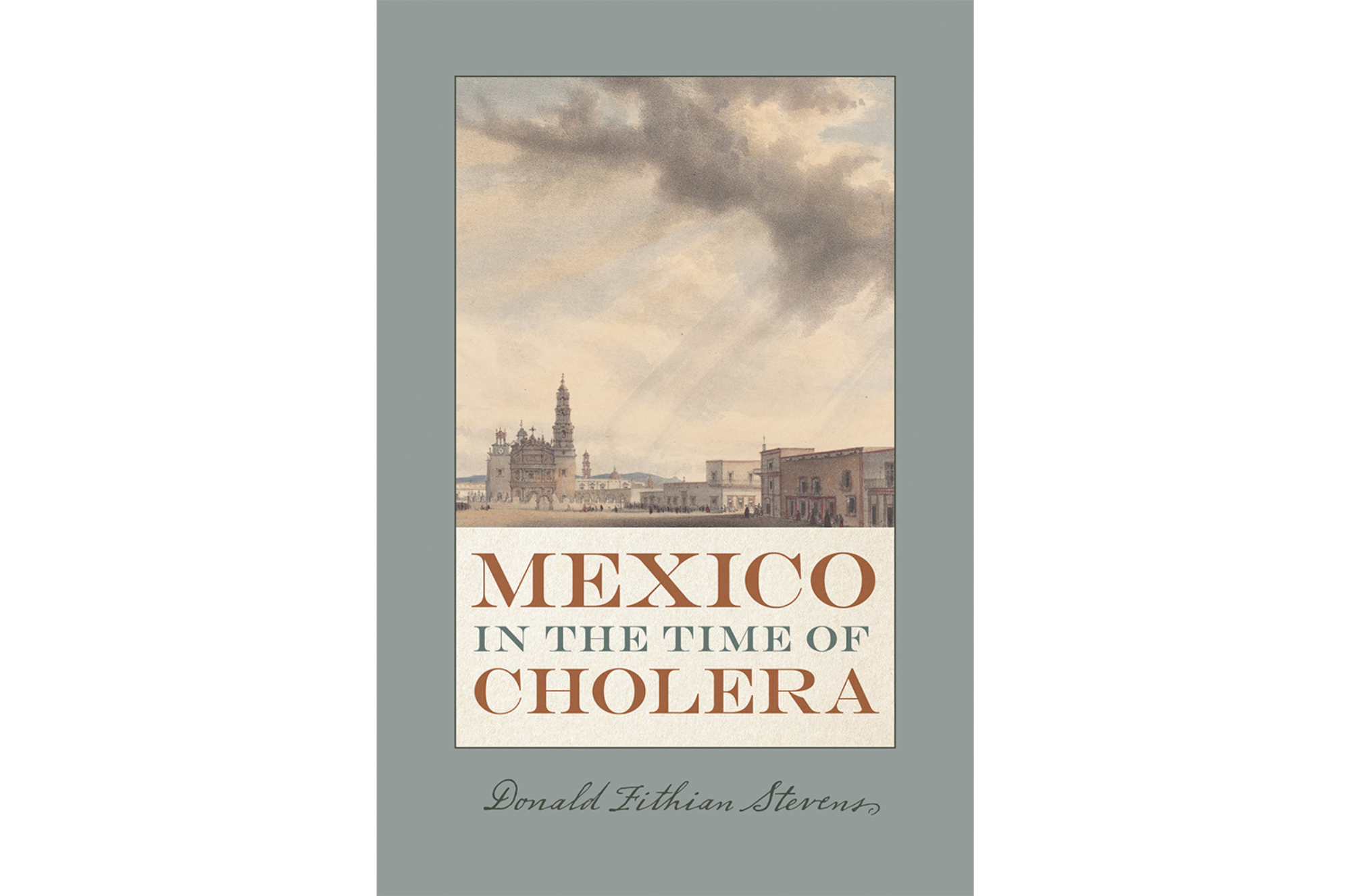We forget how many of our secrets actually lie in public places. Perhaps in this age of all things digital we expect this. I can find your address and other vital information with a few taps on my keyboard. Today, we have little faith in the integrity of our privacy. In fact, we depend on the laziness of others and our belief that they won’t go looking. Gratefully, often they don’t, but with a little effort they could. Back in the days when people depended on Church documents and other papers for their vital statistics, finding information about people was much more difficult and required a tremendous amount of effort. Luckily for us, Donald Fithian Stevens has exerted that effort in Mexico in the Time of Cholera.
Yes, the title is an allusion to the García Márquez book Love in the Time of Cholera and perhaps it might have been better titled Love, Sex, and Death in the Time of the 1833 Cholera Epidemic in Mexico. We often see history as dry and barren, but the people who made history were as alive then as we are today. And in this book, Stevens captures their lives—births, marriages, and deaths—as they live through the cholera epidemic of 1833. This is an incredibly well-researched book. That research is what allows him to bring his characters to life, for the narratives in this book are not simply anecdotes for illustration purposes but show real people who lived real lives. Essentially, this book is about stories, exciting and tragic stories,
Take, for example, Guillermo Prieto, the famous Mexican poet and politician. In Stevens’ book we get an insight into the man’s love life, showing the role of love at first sight (a grand thing!) and the ways that experience was converted into Prieto’s fiction—where love at first sight did not lead to a happy marriage. We are left wondering what kind of marriage Prieto actually had—even though he waxes poetic about it in his old age.
Then, there is the example of the less famous but tremendously engaging Concepción “Concha” Lombardo and her two less-than-satisfactory novios. But Concha is a feisty young woman—a sign of the new Mexico being birthed out of the Colonial Period as the country transitions into independence and a republican government. Thankfully, Concha’s final foray into love is something out of a fairy tale. She is swept off her feet. It seems that the third time is a charm.
One of the methods Stevens uses to illustrate the nature of Mexican love life during this period is an examination of the romantic novel. Looking at several novels, he infers from them not only what people felt their love lives and marriages ought to be but also what they might be in real life. The marriages of older men with very young girls—do they always end in tragedy? Should the new notion of people choosing their own spouses be followed? But, if so, how do you keep money within the family? Are egalitarian marriages better than arranged marriages? Should you ever marry across class lines?
One exemplary achievement of this book is its examination of the numbers. Stevens compares parish archives for four colonial cities: Mexico City, Puebla, Oaxaca, and San Luis Potosí. He compares the rates of births, deaths, and marriages among the four cities as well as among the social classes (Spanish, la gente decente, and the poorer classes) within each city. In doing so, he informs us that many of the assumptions and pre-conceived notions we have of Mexican life are wrong. Were there many child marriages? Not many. A few, with girls as young as 12. But child marriages were a phenomenon of the upper class, not the lower classes. We like to think of cohabitation without the benefit of marriage as a modern behavior, but it is not. There were many irregular relationships in Mexico at this time, and the ubiquitous presence of death brought on by the cholera epidemic moved many of these couples to get hitched—one assumes in hopes of a better outcome in the afterlife—and so people did get married in some towns but not in others. There is a very interesting phenomenon of children of “unknown parentage”. Brought in by their godmothers and godfathers to be baptized, the godparents insisted that they did not know who the parents of the child were. Often priests believed them; sometimes they did not. Where the cholera epidemic is concerned, the politics between state and church play out in health safety measures, where some people have advanced notions of how to deal with the epidemic and others do not. They believe these new-fangled ideas about public health as offshoots of the new Independence movement. The great debate about where the cholera victims should be buried is a fascinating story in itself.
Mexico in the Time of Cholera is a book that can be enjoyed by the scholarly and the non-scholarly alike. Yes, there is data, but there are the stories, the wonderful stories!
Mexico in the Time of Cholera
By Donald Fithian Stevens
University of New Mexico Press
Published in 2019
315 Pages

Stacey E. Ake, PhD, PhD is an Associate Teaching Professor of Philosophy in Drexel’s English & Philosophy Department. Her interests include existentialism, semiotics, biosemiotics, science and religion as well as 19th Century Continental Philosophy, particularly Kierkegaard. She spent 5 years at the Kierkegaard Research Center in Copenhagen, Denmark. She also worked for two years as editor of the online journal published by the Metanexus Institute for Religion and Science. She lives in West Philadelphia.
